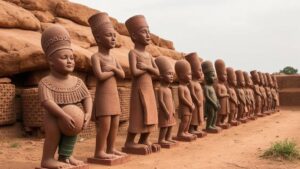Searching for the cryptic carvings hidden in the ancient walls of Angkor Wat.
Searching for the Cryptic Carvings Hidden in the Ancient Walls of Angkor Wat
Angkor Wat, the magnificent temple complex located in northern Cambodia, is renowned for its stunning architecture and historical significance. Built in the early 12th century during the reign of King Suryavarman II, this UNESCO World Heritage Site is not only a feat of engineering but also an intricate canvas of spiritual and artistic expression. As visitors traverse its sprawling grounds, many find themselves captivated by the cryptic carvings hidden within the ancient walls–each telling a story from a time long past.
The Historical Context of Angkor Wat
Constructed as a Hindu temple dedicated to the god Vishnu, Angkor Wat originally served as the centerpiece of the Khmer Empire. Over the centuries, it transformed into a Buddhist shrine, reflecting the regions religious evolution. Its walls are adorned with over 3,000 bas-reliefs and statues, depicting various mythological scenes, historical events, and daily life in the Khmer Empire. For example, the famous Churning of the Ocean of Milk, sculpted on the outer gallery, illustrates a creation myth central to Hindu beliefs.
The Art of the Carvings
The intricate carvings of Angkor Wat showcase advanced artistry and craftsmanship, demonstrating the skill level of the artisans who worked on them. e sculptures range from detailed depictions of celestial beings to everyday activities, revealing significant insights into the culture and values of the Khmer civilization. Notably, some of the most striking images include:
- The celestial dancers, known as apsaras, which celebrate the grace and beauty of women in Khmer society.
- The scenes of battle, highlighting the military prowess of the Khmer Empire, particularly the legendary campaign against the Chams.
Also, the techniques used to create these carvings provide a glimpse into ancient Khmer artistic practices. The use of sandstone, sourced from nearby mountains, allowed for fine detailing, while the depth of the carvings varied, enhancing the three-dimensional effect and adding to the overall visual impact.
Exploring Hidden Secrets
Many of Angkor Wats carvings contain elements that remain cryptic, leading historians and archaeologists to speculate on their meanings. For example, certain panels appear to feature celestial motifs, while others depict less understood symbols, prompting discussions about their potential esoteric significance. Adventurous visitors often engage in a personal quest to decipher these mysteries, such as:
- Identifying specific deities represented in the carvings.
- Connecting scenes to known historical events or legends documented in ancient texts.
This exploration is not merely an intellectual exercise; it also deepens the appreciation for the skill and creativity invested in the artwork. Also, it highlights the importance of preserving these carvings for future generations, as their detailed narratives contribute vital knowledge about Khmer history and culture.
Real-World Applications of Carving Studies
The study of these carvings extends beyond mere historical interest. Modern scholars are utilizing technology, such as 3D modeling and laser scanning, to analyze and preserve these artworks. An example is the Angkor Temple Complex Project, which involves documenting carvings to create digital archives that can be used for administration and conservation efforts. This innovative approach not only aids in preservation but also enhances accessibility for researchers and the general public.
Concluding Insights: The Significance of the Carvings
The cryptic carvings of Angkor Wat are more than ornamental embellishments; they are vital threads in the tapestry of Khmer history. Each scratch and contour holds a story waiting to be told, reflecting both the spiritual beliefs and everyday lives of an ancient civilization. For those eager to unravel these inscriptions, Angkor Wat offers not just a journey through physical space but also a passage through time itself.
As you explore Angkor Wat, consider these actionable takeaways:
- Engage with knowledgeable guides who can enlighten you about the history and meanings behind the carvings.
- Participate in conservation efforts by supporting local organizations dedicated to protecting this cultural heritage.
Whether you are an art enthusiast, a history buff, or simply a curious traveler, the hidden carvings of Angkor Wat promise to enrich your understanding of a remarkable era of human achievement.



